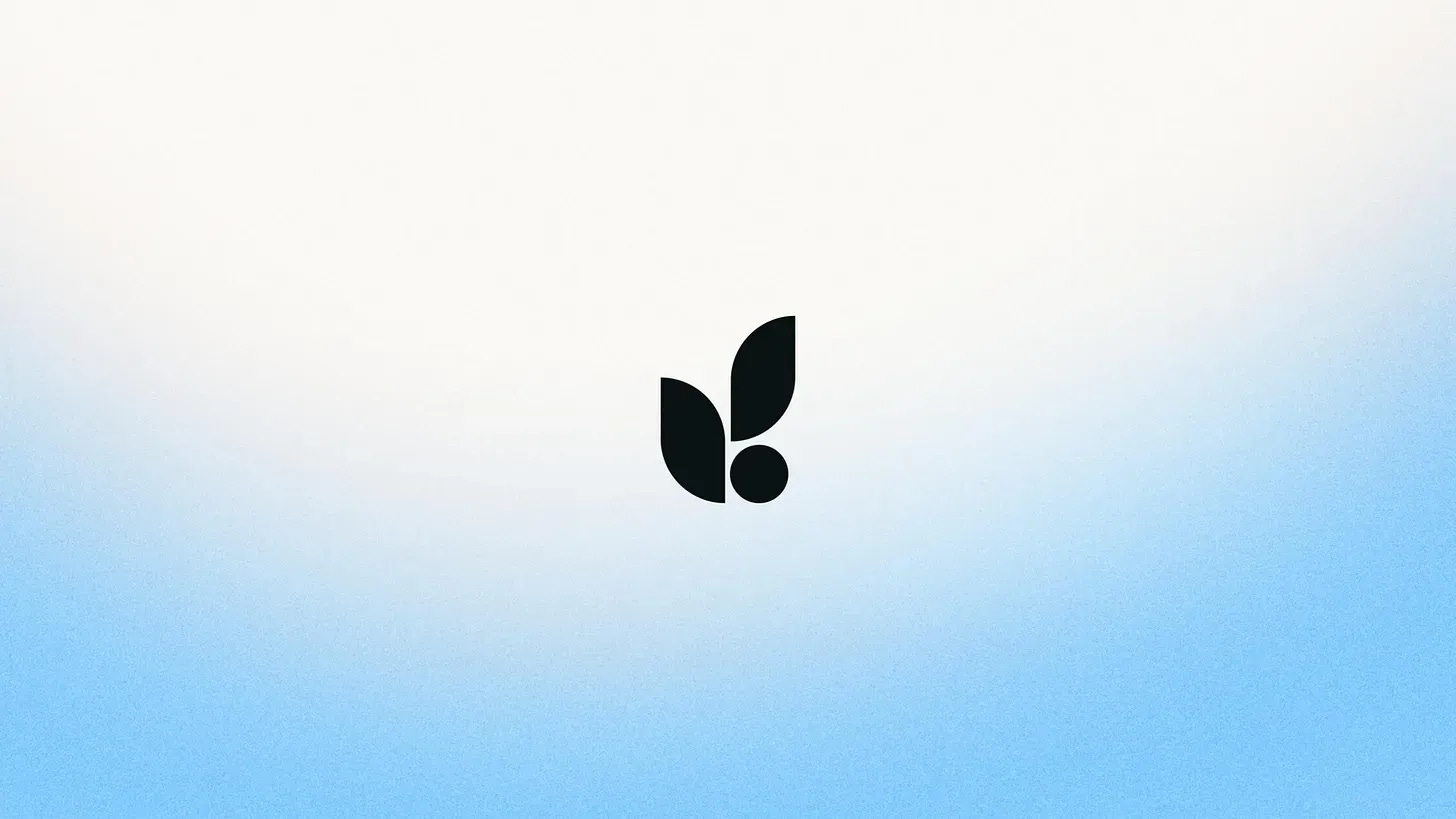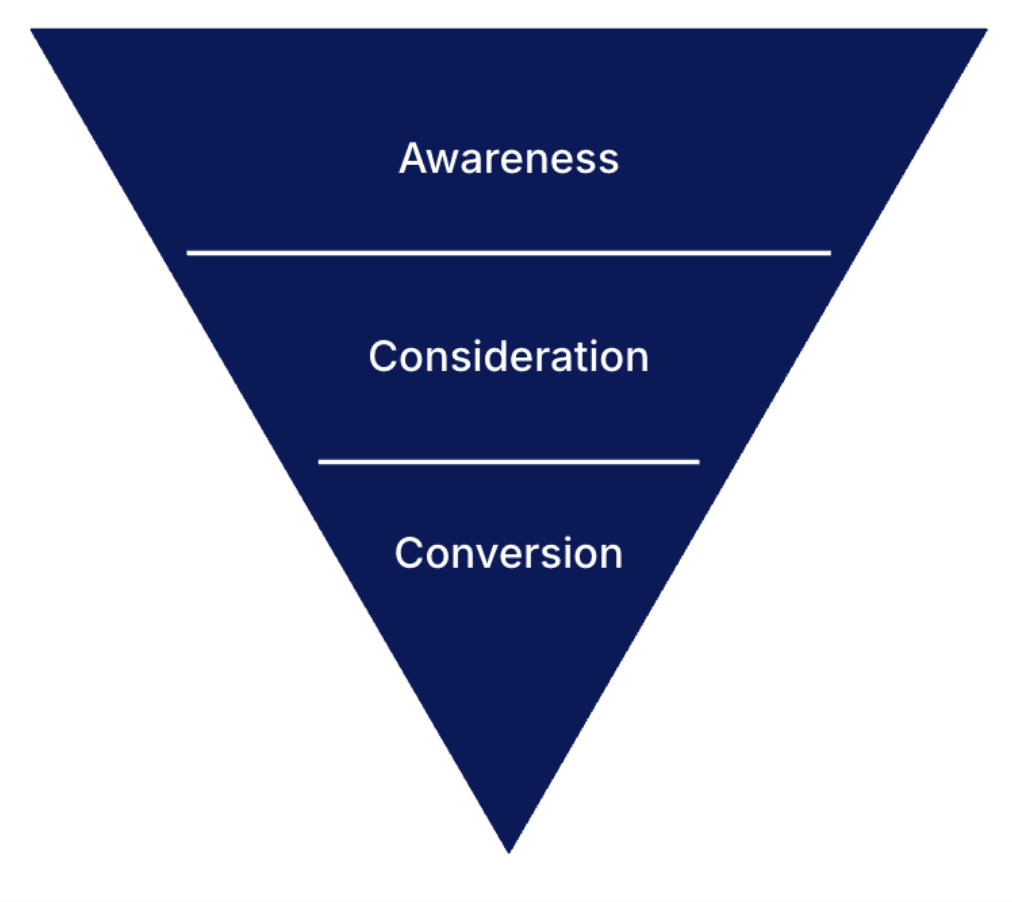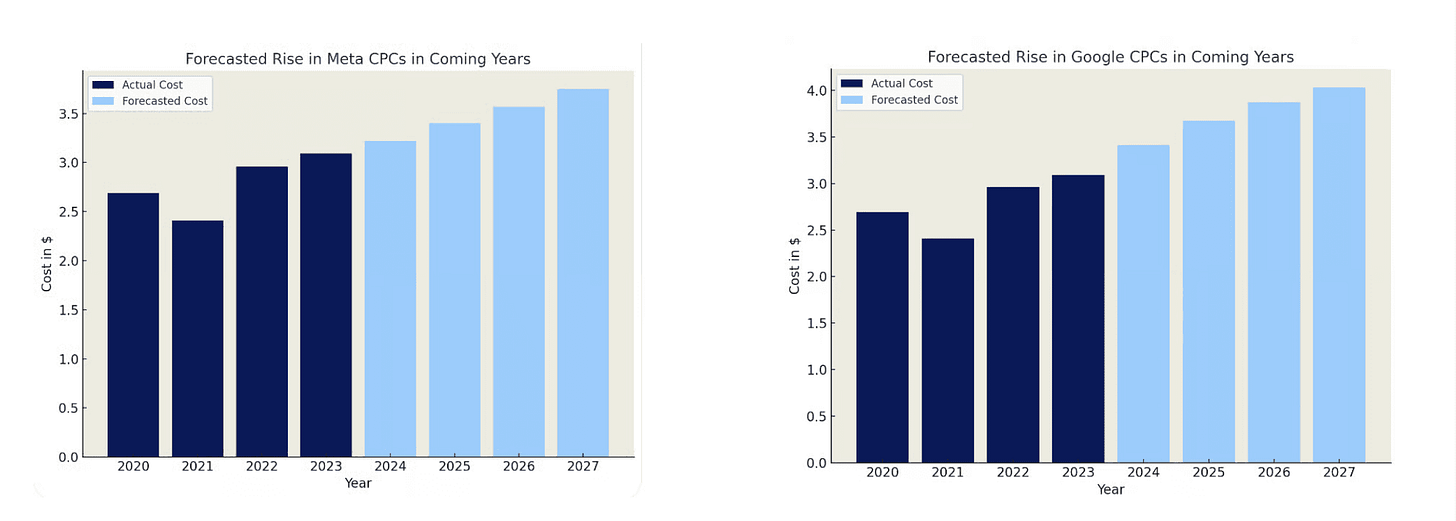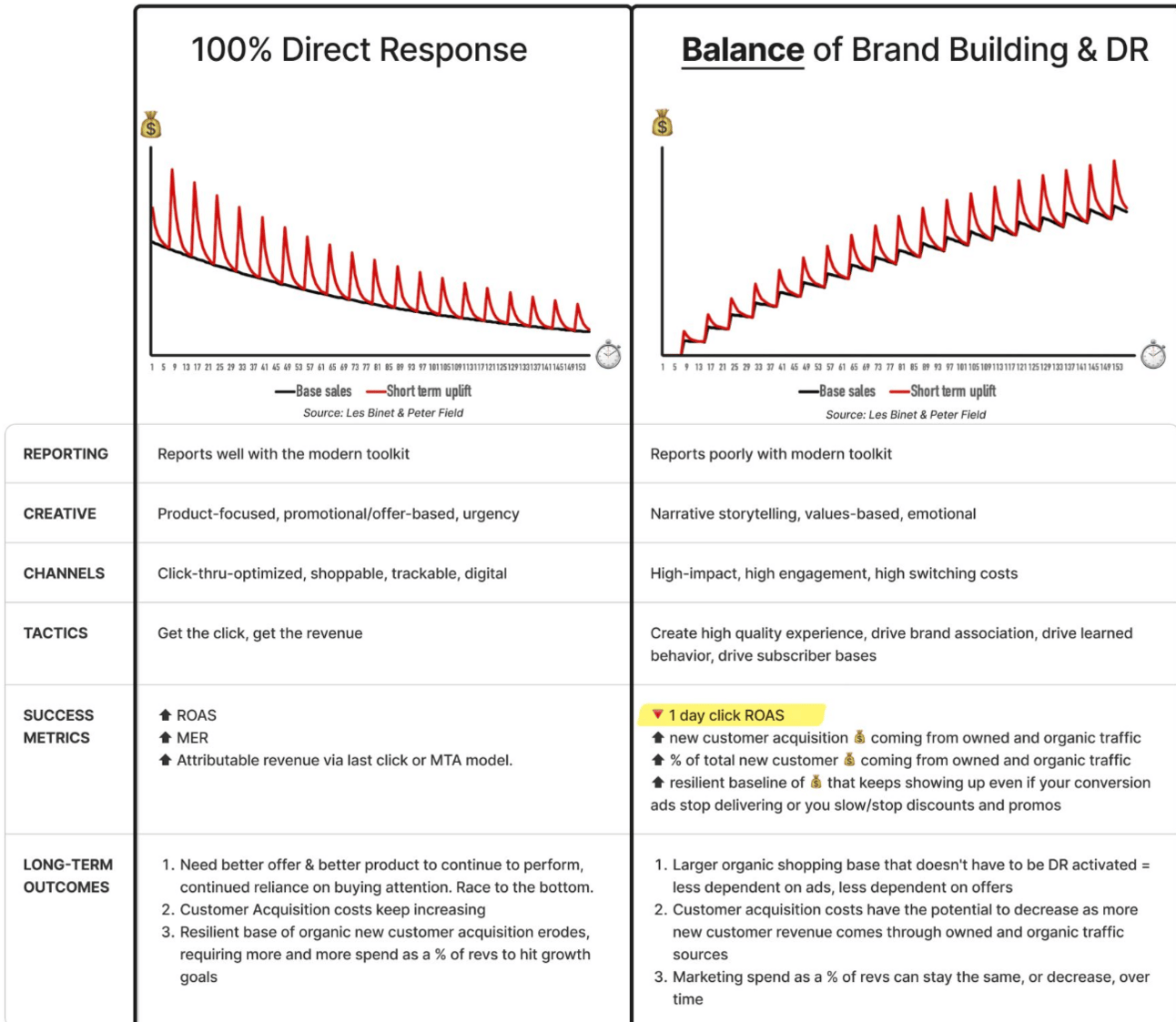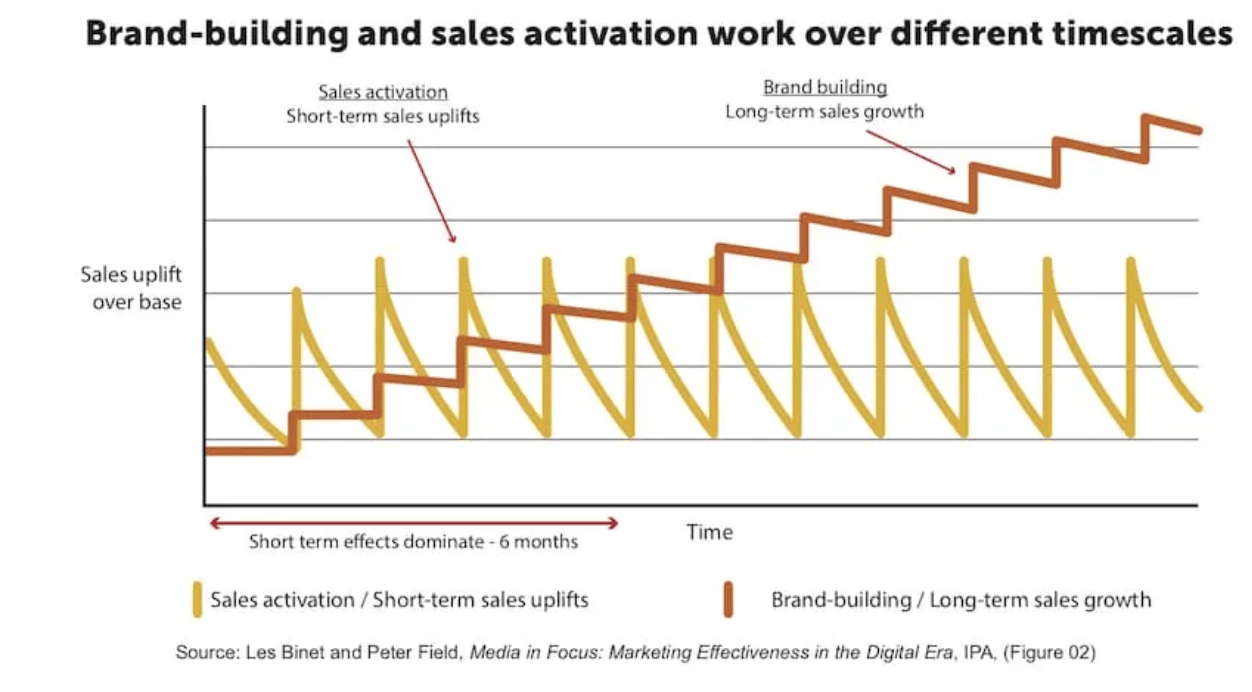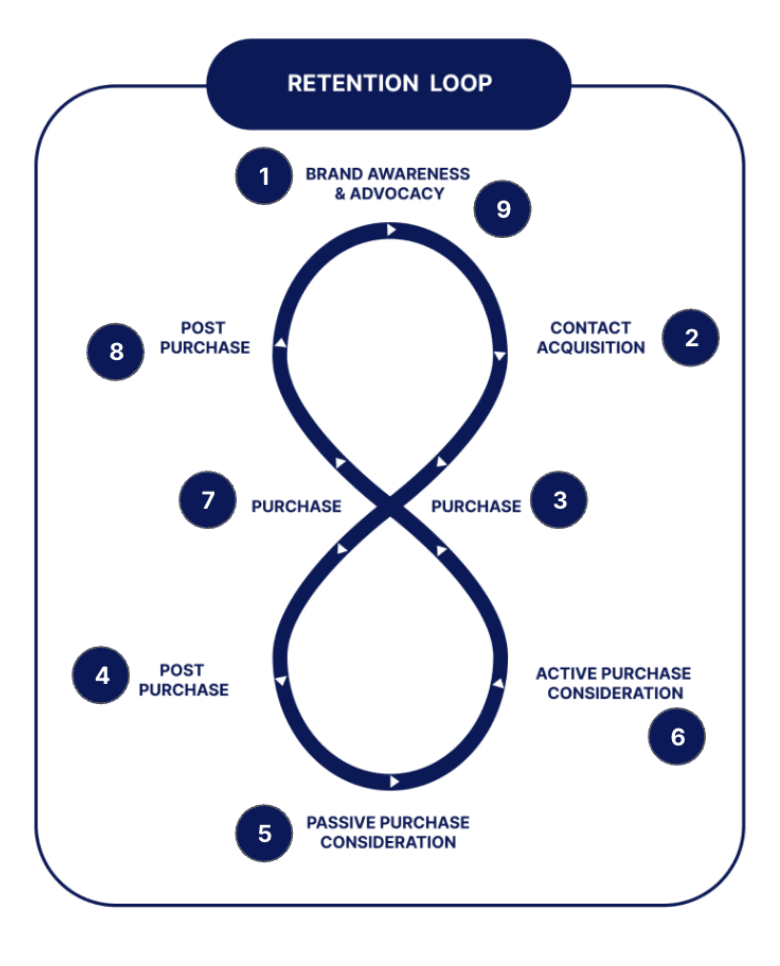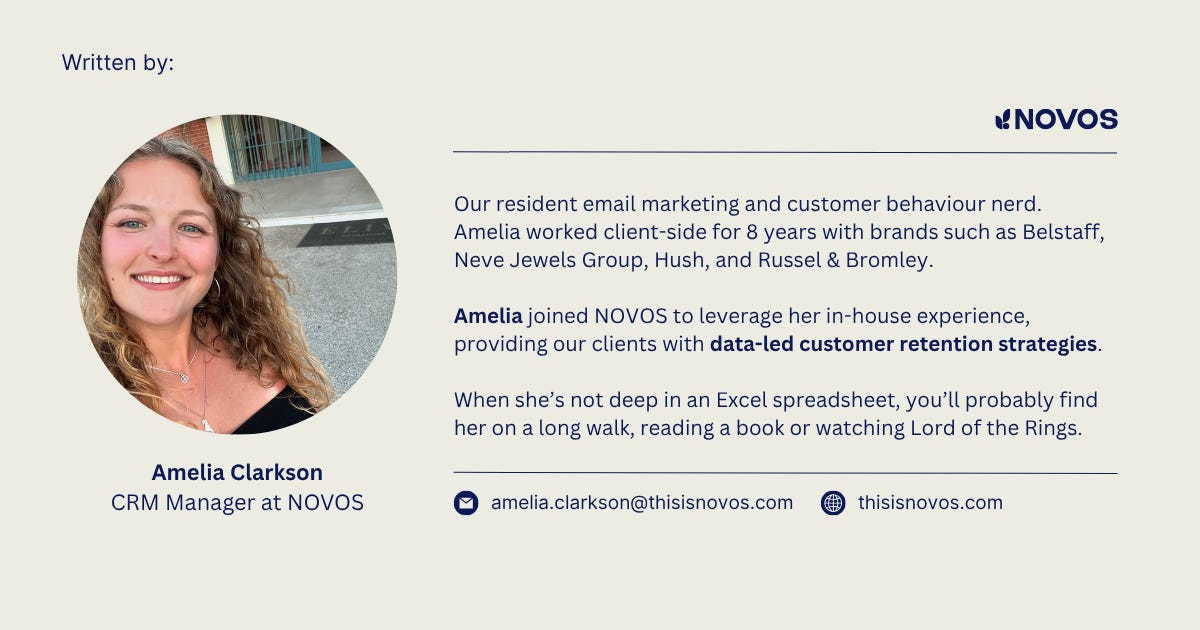Introducing The Retention Loop
Too many eCom brands treat retention as an acquisition channel. This is driven from a paid media short term mindset that runs through the culture of most marketing teams.
All marketers know about the traditional conversion funnel.
A person becomes aware of your brand
They consider making a purchase
They convert and become a customer
Sometimes ‘post-purchase’ is put at the end, sometimes it isn’t
Different marketing channels have various roles within the funnel, and utilising a potent mix of marketing channels helps customers find you at different touchpoints at different stages of their journey.
The rising costs of acquisition channels
The funnel is essential because businesses must earn new customers for sustained growth.
The downside to the funnel is that it’s only relevant to acquisition channels, as it drives customers to the purchase stage without considering how to encourage them to come back.
Acquisition (specifically, paid media) will continue to get more expensive. The tech giants’ investment in AI is astronomical, and they need to get this money back somehow.
Here’s a forecast for the rising cost of CPCs across Meta + Google for the next few years:
You may have an untapped audience of high-value customers that you can nurture if only you knew where to start! The end goal of acquisition should be to boost customer lifetime value, ensuring strong marketing efficiency across teams.
The funnel emphasises paid channels, focusing heavily on driving purchase, whereas the Retention Loop focuses on nurturing customer relationships at all journey stages. Learnings from the Loop can be applied to all marketing channels, including leveraging your owned database instead of relying too heavily on expensive activations.
The Hidden Impact of Paid Media on Team Culture
Paid media is the opposite of incremental growth, as this post illustrates:
Reference: https://www.linkedin.com/posts/prestonr_on-the-10-year-journey-to-chubbies-ipo-activity-7249218444259155968-eo0C
Here’s another visual for you from Les Binet:
We’re not saying don’t invest in paid media; we see too many brands over-indexing these channels. One example is changing the business report's attribution to 14 days, as it best proves paid work.
The paid mentality becomes toxic through the marketing team's culture, as businesses tend to focus disproportionately on short-term acquisition channels and try to use retention channels in the same way, using commercial messaging to drive immediate sales.
An email send is judged based on the sales it drives, and there is little awareness of the long-term impact of this constant sales messaging on your brand.
According to a comprehensive CRM study, 80% of revenue from the most successful businesses comes from existing customers, highlighting the importance of retaining customers.
However, existing customers require a different approach.
We believe the best way to depict customer retention is in an infinite loop. The cost of acquiring new customers is rising yearly, so the ultimate goal should be to keep these customers indefinitely.
How The Retention Loop Works
Brand awareness - A potential Lead learns about your brand.
Contact acquisition - A Lead signs up for your marketing channels.
First purchase - Lead becomes a customer by making their first purchase.
Post first purchase - Opportunity to nurture the customer as they are unlikely to purchase again so soon.
Passive purchase consideration - Customer decides if they like your product or service and want to purchase again.
Active purchase consideration - Customer is ready to purchase again.
Purchase - Customer makes another purchase.
Post purchase - More opportunity to build a relationship with the customer, not drive more sales.
Brand advocacy: The more customers purchase from you, the more likely they will refer you to friends or family and feed the loop with more potential leads.
This loop works differently depending on the business. For example, the timing between purchases may increase. However, the basic principle of the retention loop remains the same - we need our customers to continue to choose us for our product or service.
The Loop reflects desirable customer behaviour more accurately and covers the entire lifecycle journey, including advocacy and referral. Understanding customer sentiment at each stage enables you to understand what content they seek at every step to encourage deeper relationships.
Conclusion
Brands must continue to use the funnel when discussing acquisition activity. On the other hand, The Loop should be used in the context of retention. Maintaining a relationship with your existing customers is a delicate balancing act, requiring different tactics at different stages. The NOVOS retention loop acts to help you identify the kind of communication needed at each stage of the journey.



